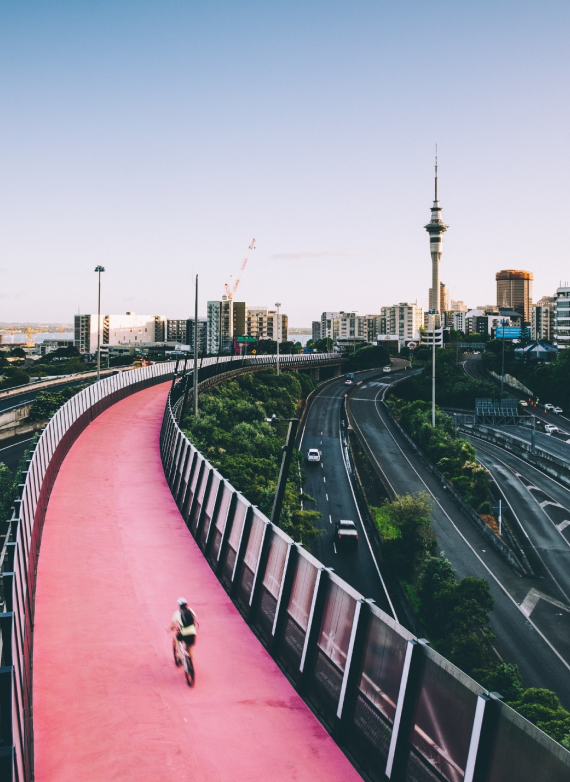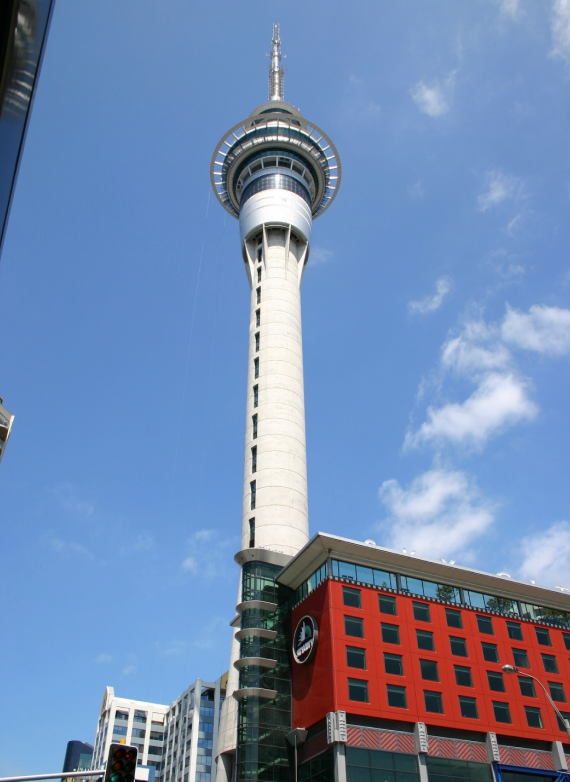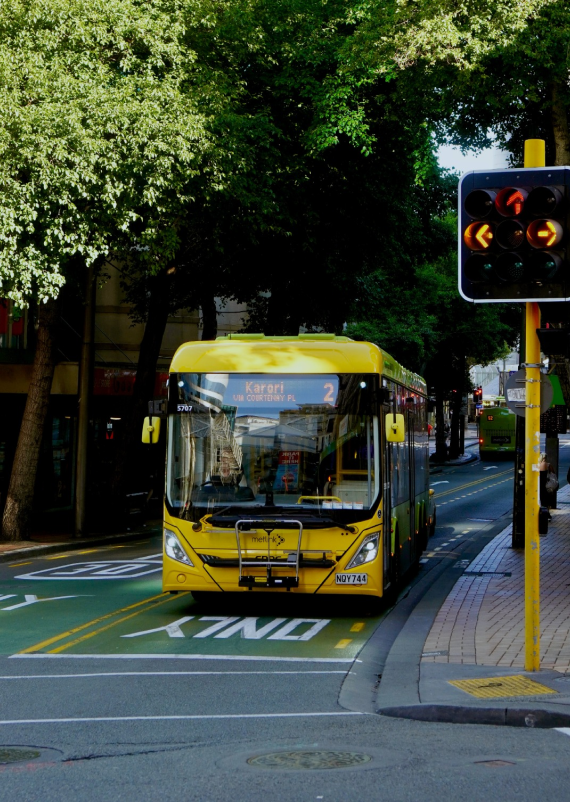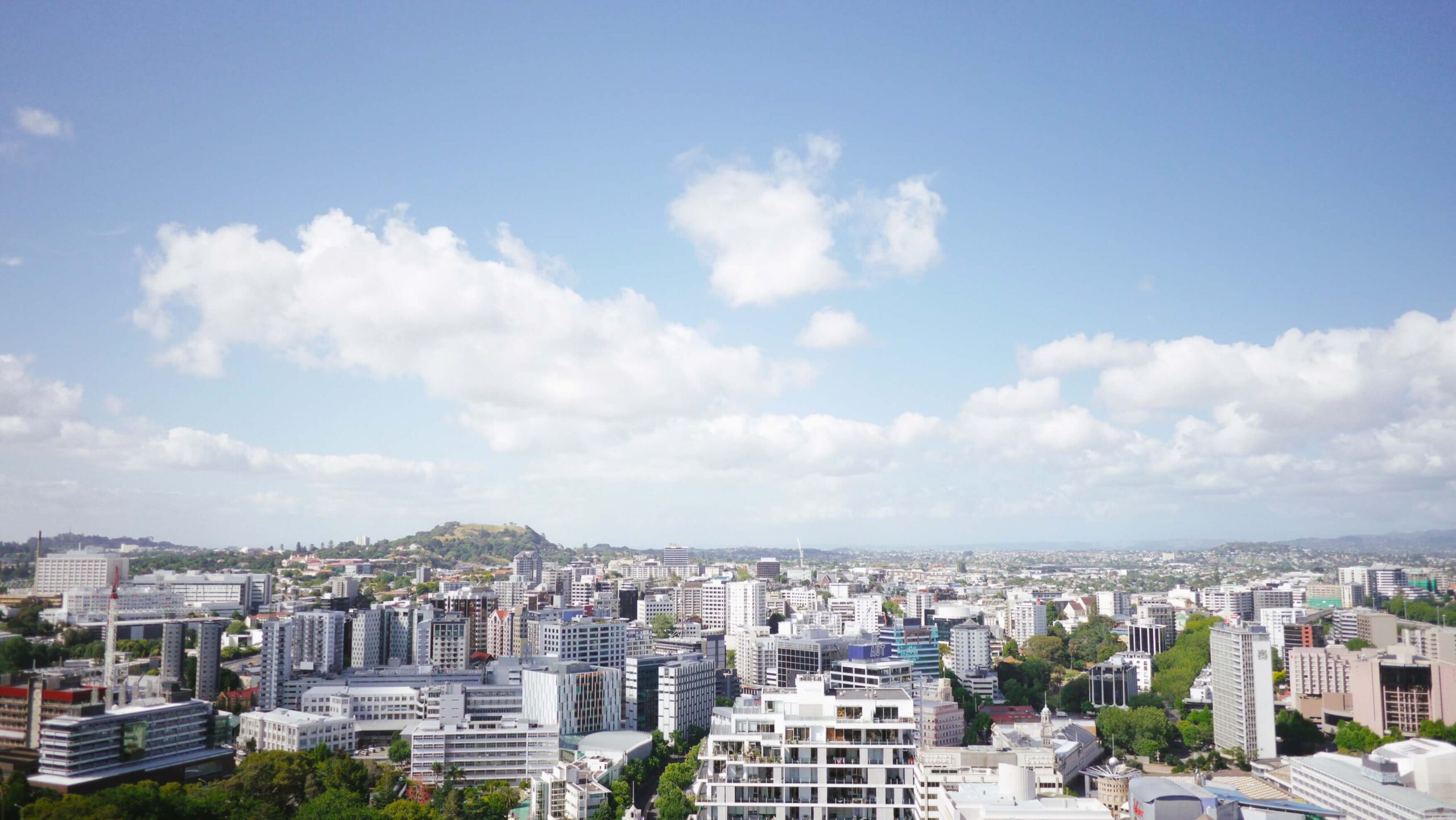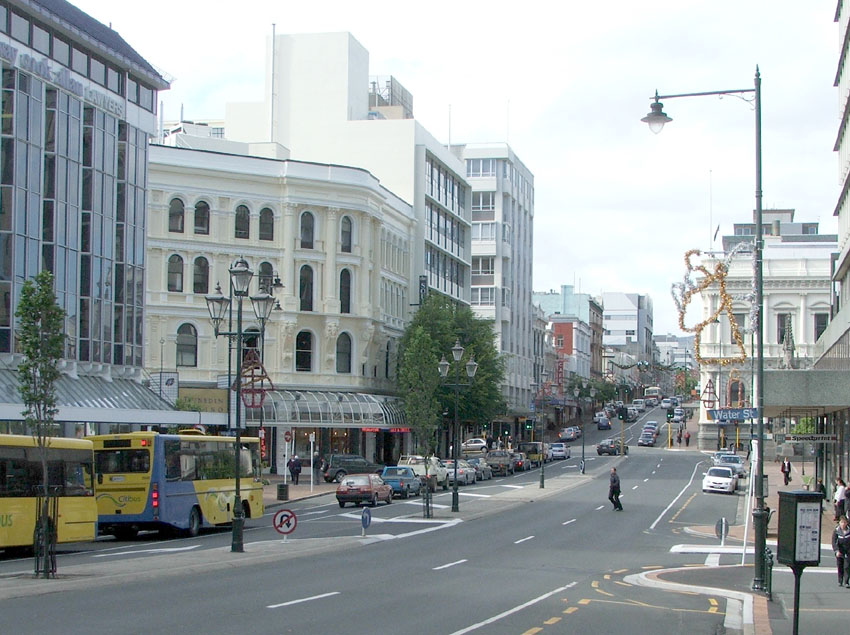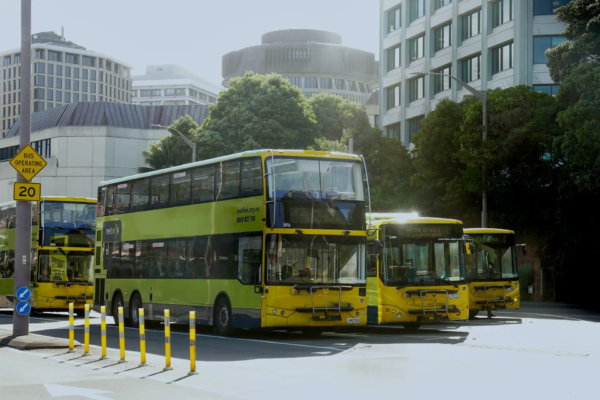1 Active transport
1.1 Improve active transport conditions
1.1.1 Description
Active transportation (walking, bicycling, and variants such as wheelchairs and scooter) is the most basic form of transportation. The quality of their travel conditions affects travel activity directly and indirectly. In a typical community, 10% to 20% of trips are currently made by active modes, and there is latent demand, travelers would use these modes more if conditions improved. In addition, most public transit trips include walking and bicycling links; one of the best ways to encourage public transit is to improve walking and bicycling conditions around stops and stations, increasing public transport travel. Local walkability also determines the range of parking facilities that can serve a destination, and therefore the feasibility of implementing parking management strategies such as sharing parking facilities.
1.1.2 Type of travel affected
Active travel improvements can directly reduce local automobile trips, and by improving public transit access can reduce longer automobile trips.
1.1.3 How travel and emission effects can be measured and modelled
Various indexes and rating systems can be used to evaluate active transport conditions considering factors such as the quality of sidewalks and crosswalks, roadway traffic speeds, and amenities such as street trees. Conventional transportation models are not very sensitive to active travel conditions. Case studies can be used to identify potential improvements in active travel and resulting reductions in automobile travel eg, the Connect2 improvements in the UK have revealed survey results showing 21% of respondents shifted from driving to active in Cardiff, 24% in after Kenilworth and 25% in Southhamption.
Infrastructure that makes walking and cycling safer is likely to be the most effective intervention for encouraging active transport (Smith, Hosking et al. 2017).
As a result of interactions with PT and parking polices, active transport improvements often leverage larger reductions in vehicle travel, so an additional kilometer of active travel reduces several kilometers of driving. For example, Guo and Gandavarapu (2010) found that installing sidewalks on all streets in a typical North American community would increase per capita walking and bicycling by 0.097 average daily miles and reduce automobile travel by 1.142 daily vehicle-miles, about 12 miles of reduced driving for each mile of increased active travel.
Wedderburn (2013) found that in New Zealand cities, on average, each additional daily transit trip by driving age residents increases daily walking (in addition to transit access walking trips) by 0.95 trips and 1.21 kilometers, and reduces two daily car driver trips and 45km driven. Frank, et al. (2011) found that increasing sidewalk coverage from a ratio of 0.57 (sidewalks on both sides of 30% of all streets) to 1.4 (sidewalks on both sides of 70% of streets) could reduce vehicle travel 3.4% and carbon emissions 4.9%. Maizlish, Rudolph and Jiang (2022) conclude that active transportation improvements could reduce transportation emissions 24%.
Active Leverage Effects (Guo and Gandavarapu 2010) Walking and cycling improvements often leverage additional vehicle travel reductions in these ways:
- Shorter trips. A shorter active trip often substitutes for longer motorized trips, such as when people choose a local store rather than driving to more distant shops.
- Reduced chauffeuring. Poor walking conditions often cause motorists to chauffeur non-drivers which generates empty backhauls. For such trips, a mile of walking often reduces two vehicle-miles of travel.
- Increased public transit. Walking and cycling improvements can support public transit travel, since most transit trips involve walking and cycling links.
- Vehicle ownership reductions. Improving alternative modes can allow some households to reduce their vehicle ownership. Since motor vehicles are costly to own but relatively cheap to use, once households purchase an automobile they tend to use it, including some relatively low-value trips.
- Land use patterns. Walking and cycling improvements help create more compact, multi-modal communities by reducing road and parking facility land requirements which reduces travel distances.
- Social norms. More walking and cycling can help increase social acceptance of alternative modes.
Not every active mode improvement has all these effects, but many small changes can help make a community more multi-modal, and therefore reduce total vehicle travel. Conventional planning analysis often ignores these indirect impacts and so underestimates the potential of active improvements to achieve objectives such as reducing congestion, accidents and pollution emissions.
1.1.4 Secondary impacts
Better active travel conditions improve affordability, reduces infrastructure costs, and leads to improved public health. It provides more independent mobility for non-drivers, which can reduce inefficient chauffeuring trips such as the need for parents to drive adolescents to local destinations.
1.1.5 Key Information sources
Frank, Lawrence D. et al. (2008), "Urban Form, Travel Time, and Cost Relationships with Tour Complexity and Mode Choice," Transportation (www.springerlink.com), Vol. 35, pp. 37-54 (https://link.springer.com/article/10.1007/s11116-007-9136-6).
This study models how transportation and land use factors affect travel activity including walking and bicycling.
Guo, Jessica Y. and Sasanka Gandavarapu (2010), "An Economic Evaluation of Health-Promotive Built Environment Changes," Preventive Medicine, Vol. 50, Supplement 1, January, pp. S44-S49; at www.activelivingresearch.org/resourcesearch/journalspecialissues.
See table above.
Maizlish, Neil, Linda Rudolph and Chengsheng Jiang (2022), "Health Benefits of Strategies for Carbon Mitigation in US Transportation, 2017‒2050", American Journal of Public Health, Vo. 112, no. 3, pp. 426-433 (https://doi.org/10.2105/AJPH.2021.306600).
This study evaluated the health and environmental impacts of transportation policies that improve and encourage walking and bicycling.
Nunns, P., & Dodge, N. (2020). Impact on urban amenity in pedestrian environments. NZ Transport Agency. https://nzta.govt.nz/assets/resources/Monetised-benefits-and-costs-manual-technical-notes/impact-on-urban-amenity-in-pedestrian-environments-march-2020.pdf
Provides guidance on the valuation of improved pedestrian facilities.
Smith, M., Hosking, J., Woodward, A., Witten, K., MacMillan, A., Field, A., Baas, P., & Mackie, H. (2017). Systematic literature review of built environment effects on physical activity and active transport – an update and new findings on health equity. International Journal of Behavioral Nutrition and Physical Activity, 14(1), 158. https://doi.org/10.1186/s12966-017-0613-9
A literature reviews concludes that improving neighbourhood walkability, quality of parks and playgrounds, and providing adequate active transport infrastructure is likely to generate positive impacts on activity in children and adults.
Wedderburn, M. (2013), Improving the Cost-Benefit Analysis of Integrated PT, Walking and Cycling, Research Report 537, NZ Transport Agency (www.nzta.govt.nz); at https://bit.ly/2DH9fyD.
1.2 Enhanced Cycle Provision
1.2.1 Description
Well-connected, high-quality cycling infrastructure plays a significant role in encouraging mode shift to cycling from driving. Car trips less than 5km are considered ‘switchable’ to cycling in the literature. While most successful in urban areas with a high density of short trips, cycling can play a strong role in non-urban areas especially when combined with other sustainable modes.
Studies have found distance/travel time, topography, and perceived safety are strong determinants of cycling uptake. Infrastructure, and policies to increase the speed and comfort of door-to-door travel, will have the strongest impact and can have a strong impact under suitable circumstances. This includes creating direct routes, minimising intersections, minimising changes in elevation, favourable traffic light control, allowing contraflow traffic, cycle lifts, e-bike sharing, and providing easily accessible, at-grade storage at the beginning and end of journeys. Studies demonstrate isolated improvements have little impact on mode shift; networks of infrastructure that connect users with desired destinations are much more successful in encouraging uptake. A Copenhagen study reports that cyclists were much more satisfied with the enhanced cycle highways, two years after the improvements, compared with a control area where improvements were not made. Induced trips only accounted for about 4-5% of trips two years after implementation, but the impact may continue to grow over a longer period.
In commuter towns, there is large potential for cycling to rail stations. In the UK, 60% of the population lives within 15 minutes of cycling to a rail station, but only 2% of users’ cycle to the station. Having the facilities and confidence to cycle to the station as part of a daily commute encourages an overall more sustainable trip compared to driving the whole route. It can also reduce the need for car ownership, which can then encourage more sustainable trip choices for non-commute trips as well. With the rising popularity of e-bikes, the preferred range for active travel can also be extended comfortably from around 5km to over 10km. They are also more accessible to individuals with limited mobility, encourage car-free households, and allow farther travel. They have strong potential in peri-urban areas if there is access to infrastructure.
While short car trips (<5km) make up a larger portion of trips - half of all trips in a Cardiff (Wales) study and two thirds of trips in Germany for example - their collective carbon impact is smaller. Almost 75% of emissions are from the 15% of trips which are long trips. Therefore, the potential for direct CO2 reduction with increased cycling is lower than other measures. While the main driver for cycling infrastructure may not be decarbonisation, it is a co-benefit to the health and safety impacts, congestion alleviation, and built environment improvements which can be the primary reason to encourage cycling. In addition to this limiting factor, there is also mixed evidence on the carbon reduction potential of new cycling infrastructure, as detailed below. The primary reasons to encourage cycling, include numerous positive impacts on health, congestion alleviation, and built environment improvements associated with mode shift. The decarbonisation potential of cycling infrastructure remains mixed and cannot be the only focus in climate mitigation policies. Coupled with other measures, it may have stronger impacts.
From Tayarani: 20% which is similar to the mode share in Davis, CA (the highest bicycle mode share of any U.S. city) and 10% which is similar to mode share in other popular bicycling city’s such as Boulder, CO (McLeod et al., 2013). Both of these bicycle mode shares are still well below what has been achieved in several European countries (Haustein and Nielsen, 2016; Heinen et al., 2013).
1.2.2 Type of travel affected
Short trips (up to 10km with standard bikes and further with e-bikes).
1.2.3 How travel and emission effects can be measured and modelled
A number of studies quantify CO2 impacts of mode shift to cycling. In a study of Cardiff half of car trips were considered short enough (<5km) to switch to cycling or walking. Taking into account individual travel patterns and constraints (based on the sample), 41% of these could substitute car trips saving nearly 5% of all CO2 emissions from car travel.
In Germany, 11% of trips (3% of total vehicle-kilometres travelled) are by bike. This could increase to 21% if 50% of all short trips were to switch to bike. A study from Ireland finds that shifting from driving to cycling results in 134g CO2e saved per passenger-kilometre.
An e-bike study from Portland (USA) estimates CO2 reductions are in the order of 1000 metric tons per day if 15% of trips are made by e-bike. This is an approximately 11% reduction considering Portland’s current CO2 emissions are approximately 8000 tons per day. Calculations are based conservatively on the ‘dirtiest’ electricity generation in USA.
A UK based study using the English National Travel Survey, highlights that encouraging multimodality, which is what cycling infrastructure in non-urban environments is meant to do, may not have an impact on CO2. When comparing similar distance trips, multimodal trips emit lower levels of emissions, however multimodality as a lifestyle change is not associated with lower emissions, because the greater levels of travel activity among these individuals offset the benefits derived from their multimodal choices. A longitudinal study in the UK analysing impacts of walking and cycling infrastructure finds limited evidence that the infrastructure led to CO2 emission reductions.
1.2.4 Secondary impacts
- Health and safety benefits: encouraging physical activity can lower stress, risk of cardiovascular disease and diabetes, and noise related health impacts; it can also improve mental health. Lower levels of air pollution, from reduced congestion, benefits those with respiratory illnesses and vulnerable populations (pregnant women, the elderly, children etc.). Lower speeds compared to cars mean crash related fatalities are less serious.
- Congestion alleviation: reducing congestion means lower levels of air pollution, calmer streets, and reduced need for road space.
- Built environment improvements: lower traffic speeds, calmer/quieter streets, reduced need for car space (roads, parking etc.), allows for more permeable surfaces rather than paved infrastructure.
- Modal shifts: It promotes the shift to active transportation modes (i.e., walking, cycling, public transportation). In Montreal, Canada, the estimated modal shift associated with the implementation of a public bike sharing program from motor vehicle use to walking, cycling, and public transportation was 6483 and 8023 trips in 2009 and 2010. This change represents 0.34% and 0.43% of all motor vehicle trips in Montreal.
Vulnerable road users (cyclists and pedestrians) are more exposed to road pollution in congested areas. Separating traffic and allowing mixed, slower traffic through calmer areas can reduce exposure.
The construction of cycle lanes themselves have carbon costs associated with them. In an Irish study, the authors found that a fully isolated greenway embodies 60.4 tonnes of CO2e per km. Therefore, 102 commuters (224 400 passenger kilometres) per year would need to shift from car to cycling, to offset the carbon footprint of a 10km greenway.
1.2.5 Key Information sources
Beckx, C., Broekx, S., Degraeuwe, B., Beusen, B., & Int Panis, L. (2013). Limits to active transport substitution of short car trips. Transportation Research Part D: Transport and Environment, 22, 10–13. https://doi.org/10.1016/j.trd.2013.03.001_Travel survey infers only 9.5% of trips substitutable by active, equivalent to 2% VKT and 3% emissions. Where?_
Cole, R., Turrell, G., Koohsari, M. J., Owen, N., & Sugiyama, T. (2017). Prevalence and correlates of walkable short car trips: A cross-sectional multilevel analysis. Journal of Transport & Health, 4, 73–80. https://doi.org/10.1016/j.jth.2016.11.007
Australian (Sunshine Coast, Brisbane, Gold Coast) 2009 travel survey found 7% of trips walkable, using trip length adjusted for age of traveler and trip chaining.
ITF (2021) Transport Climate Action Directory – Enhanced cycle provision. https://www.itf-oecd.org/policy/enhanced-cycle-provision
McLeod, E. M., Guay, P.-J., Taysom, A. J., Robinson, R. W., & Weston, M. A. (2013). Buses, Cars, Bicycles and Walkers: The Influence of the Type of Human Transport on the Flight Responses of Waterbirds. PLoS ONE, 8(12), e82008. https://doi.org/10.1371/journal.pone.0082008
Haustein, S., & Nielsen, T. A. S. (2016). European mobility cultures: A survey-based cluster analysis across 28 European countries. Journal of Transport Geography, 54, 173–180. https://doi.org/10.1016/j.jtrangeo.2016.05.014
1.3 Micromode (e-bikes, e-scooters, and their variants) Incentives
1.3.1 Description
Micromodes are relatively affordable (quality e-bikes typically cost $1,000 to $2,500, and cargo bikes suitable for carrying children or packages cost about twice that), very resource efficient, and are suitable for longer trips, heavier loads and steeper terrain than human-powered bikes. They can approximately double the portion of trips that can be made by small-wheeled vehicles.
Micromode incentives include:
- Purchase subsidies. Most jurisdictions offer substantial subsidies for purchasing electric cars, such programs can be expanded to include micromodes.
- Bicycle facility improvements. Most roadways are designed to maximize automobile travel volumes and speeds, and so are difficult and dangerous for bicycling. Many jurisdictions are improving bicycling facilities, including special lanes and paths, reducing automobile traffic speeds, and providing bicycle parking at destinations; because micromodes can approximately double bicycling demand, and require somewhat more space and higher design speeds, they can justify much more and better-quality facilities.
- Automobile travel disincentives. As with other non-auto modes, their level of use depends significantly on whether transportation policies continue to favor automobile travel, with roadways designed to maximize auto travel speeds and volumes, abundant free parking, and low fuel taxes, or whether there are more transportation demand management incentives such as lower roadway design speeds, efficient parking pricing, and commute trip reduction programs.
- Compact community planning. Although micromode expand feasible travel distances, they are still limited in speed and distance, so they work best in compact, mixed communities where most trips are less than five kilometers in length.
1.3.2 Type of travel affected
Micromodes tend to substitute for local automobile trips in urban, suburban and rural areas. Experience from jurisdictions around the world indicates that communities that encourage bicycling with suitable facilities and incentive can achieve 5% to 15% local trip bicycle mode shares. Micromodes can double these values, achieving 10% to 30% of trips. These levels are only likely to be achieved with integrated programs that include both bicycle facility improvements and automobile travel disincentives.
1.3.3 How travel and emission effects can be measured and modelled
Most travel models are ineffective at evaluating non-motorized travel, shorter trips, new modes and the effects of bicycle facility improvements, so new approaches are needed to evaluate micromode demands. They can be evaluated based on information concerning bicycle and e-bike incentives and improvements in New Zealand and other countries.
1.3.4 Secondary impacts
Subsidizing micromodes, improving bicycling conditions, and shifting travel from automobile to micromodes provides many benefits including household cost savings, reduced traffic and parking congestion, infrastructure cost savings, more independent mobility for non-drivers which helps achieve social equity goals, improved public health and safety, and reduced noise and local air pollution.
1.3.5 Key Information sources
Blewden, Michael et al. (2021), Impacts of a Public Sector E-bike Scheme, Report 678, Waka Kotahi NZ Transport Agency (www.nzta.govt.nz); at https://bit.ly/39dvzAh.
This study evaluated the effects of an employee e-bike purchase support program. It found that about a quarter of qualifying employees purchased e-bikes, who replaced an average of 64 km of previous car travel, with increased kilometres replaced over time. This indicates that the potential impacts of micromode support programs.
Bucher, Dominik et al. (2019), "Energy and Greenhouse Gas Emission Reduction Potentials Resulting from Different Commuter Electric Bicycle Adoption Scenarios in Switzerland," Renewable and Sustainable Energy Reviews 114 (DOI 10.1016/j.rser.2019.109298); at https://bit.ly/2CTCPFa.
Ensor, M., O. Maxwell and O. Bruce (2021), Mode Shift to Micromobility, Research Report 674, NZ Transport Agency (www.nzta.govt.nz); at www.nzta.govt.nz/assets/resources/research/reports/674/674-Mode-shift-to-micromobility.pdf.
This study examined how the Auckland Macro-Strategic Model (MSM) and the Auckland Strategic Active Modes Model (SAMM) could be used to evaluate micromode travel demands, including their use to access public transport. It concluded that micromobility mode share is expected to be between 3% and 11% of total trips by 2030, and it could increase public transport patronage by up to 7% in urban areas and 9% in areas as a result of first/last mile micromobility use, reducing car travel by 2% in the CBD are and 1% in suburban areas. It identifies policies and programs to maximize their impacts and benefits.
Fyhri, Aslak and Hanne Beate Sundfør (2020), "Do People Who Buy E-bikes Cycle More?" Transportation Research Part D, Vol. 86 (https://doi.org/10.1016/j.trd.2020.102422).
Norwegian study found that people who purchased an e-bike increased their bicycle use from 2.1 to 9.2km per day on average, representing a change in bike as share of all transport from 17 to 49%.
ITF (2021), Micromobility, Equity and Sustainability, International Transport Forum (www.itf-oecd.org); at www.itf-oecd.org/micromobility-equity-sustainability.
This report examines how micromobility (e-scooters, electric bikes and pedal bikes, whether docked or dockless and other forms of light mobility) can address congestion, CO2 emissions and air quality in cities and benefit users. Examines the potential for micromodes to help achieve urban transportation goals, and identifies policies to achieve this.
McQueen, Michael, John MacArthur and Christopher Cherry (2020), "The E-Bike Potential: Estimating Regional E-bike Impacts on Greenhouse Gas Emissions," Transportation Research Part D, Vo. 87 (https://doi.org/10.1016/j.trd.2020.102482).
This study uses a Portland, Oregon model to evaluate potential e-bike mode share penetration. It estimated that a 15% e-bike trip mode share would reduce car mode shares from 84.7% to 74.8%, reduce total car PMT from 28.9 million to 25.5 million per day, and reduce passenger transportation carbon dioxide emissions by 12% after accounting for e-bike emissions from electricity generation and induced e-bike trips.
1.4 Bike and scooter sharing
1.4.1 Description
Bike sharing systems provide bike stations/docks – where bicycles are available for the public to rent – over a certain geographical area. The most common systems allow individuals to either rent a bike for a single trip or subscribe to a monthly/annual pass. With a pass, subscribers can typically take out a bike as often as they wish as long as they return it within a certain period (often 30 minutes). Additional time is often charged extra. Bikes can typically be returned at any station, irrespective of where the bike was rented. "Dockless" bike sharing systems allow users to park bikes at any location within the system area. Users locate and unlock them via mobile phone applications.
Bike sharing systems may be provided by public authorities or private companies. Hybrid solutions also exist – for example, a popular solution is to contract a private entity to provide a bike sharing programme to a jurisdiction in exchange for the right to use public space to display advertisements, eg, on billboards, bus shelters, kiosks and the bikes.
Electric bike sharing has also been introduced. Such bikes allow people to travel farther with less exertion. They are especially deployed in hilly environments to attract more users.
1.4.3 How travel and emission effects can be measured and modelled
CO2 reductions from bike sharing systems come from the replacement of trips formerly made by motorised vehicles. The values differ in the literature, especially on how they are measured.
In general, every car-kilometre replaced by bike is equivalent to an approximate reduction of 0.185 kg of CO2. The value depends on the energy efficiency of the car used for the comparison and on whether the comparison accounts for direct "tailpipe" or life-cycle emissions of the vehicles. For electric bikes, the per-kilometre comparison to a car will be somewhat less favourable if the emissions stemming from power generation and distribution to the bike are considered.
The rates at which bike sharing replaces car trips differ among cities. Bike share users report having decreased their car use by amounts ranging from zero to almost 50%.
The average transport system-wide CO2 reductions reported have typically been very small or close to 1%. Incentives for bike sharing measures should therefore be combined with other travel demand management measures to ensure that increased bike use comes at the expense of less sustainable travel modes. Ideally, bike sharing systems are well integrated with the public transport offer (eg, they serve as a feeder service). That way they can encourage public transport use and may further reduce the use of less sustainable modes, such as private motorised vehicles.
Results for specific cities include:
- US Twin Cities and Washington DC – 40-50% of respondents used their car less (https://escholarship.org/uc/item/7010k9p3)
- Delft – less use of other modes except more train (ride to station) (Ma et al, 2020)
- More use from cycle-to-work scheme (Swift et al, 2016)
- School plans – Auckland Travelwise -3.7% cars and more walk/PT/pooling (Mackie, 2010)
1.4.4 Secondary impacts
Bike sharing systems can:
- reduce congestion and thereby improve air quality
- increase accessibility in the city (users have greater access to places that are beyond their reach on foot)
- increase the reach and mode share of public transport by acting as a feeder service (eg, filling a critical gap between a public transport stop and the trip origin or final destination)
- improve cycling’s image and thereby increase its overall mode share
- improve residents’ mental and physical health
- improve a city’s image and branding.
Free-floating bike sharing systems must be regulated to prevent the bicycles, especially those abandoned or illegally parked, from becoming a nuisance to residents.
Dockless systems can interfere with pedestrian space if return of bikes to authorised or dedicated spots is not appropriately managed.
If bike infrastructure is not adequate for users’ travel patterns, the accident risk (including fatalities) increases considerably, especially for users unfamiliar with local conditions, eg, tourists.
1.4.5 Key Information sources
Brand, C., Goodman, A. and Ogilvie, D (2014) Evaluating the impacts of new walking and cycling infrastructure on carbon dioxide emissions from motorized travel: A controlled longitudinal study. https://doi.org/10.1016/j.apenergy.2014.04.072
DeMaio, P. (2009) Bike-sharing: History, Impacts, Models of Provision, and Future. http://doi.org/10.5038/2375-0901.12.4.3
Fishman, E., Washington, S. and Haworth, N. (2014) Bike share’s impact on car use: Evidence from the United States, Great Britain, and Australia. https://doi.org/10.1016/j.trd.2014.05.013
Hosford at al. (2017) Assessing the Modal Impacts of Public Bike Share Systems: A Comparison of Survey Tools. International Society of Behavioral Nutrition and Physical Activity Annual Meeting. https://www.researchgate.net/publication/326583703_Assessing_the_Modal_Impacts_of_Public_Bike_Share_Systems_A_Comparison_of_Survey_Tools
ITF (2021) Transport Climate Action Directory – Bike sharing. https://www.itf-oecd.org/policy/bike-sharing
Kisner, C. (2011) Integrating Bike Share Programs into a Sustainable Transportation System.
Lu et al (2019) Considering user behavior in free-floating bike sharing system design: A data-informed spatial agent-based model. https://doi.org/10.1016/j.scs.2019.101567
Ma, Xinwei, Yufei Yuan, Niels Van Oort, Serge Hoogendoorn (2020) Bike-sharing systems’ impact on modal shift: A case study in Delft, the Netherlands, Journal of Cleaner Production, Volume 259, https://doi.org/10.1016/j.jclepro.2020.120846.
Mackie, H. (2010). Improving school travel systems. NZTA Research Report 420.
Midgley, P. – United Nations (2011) Bicycle-Sharing Schemes: Enhancing Sustainable Mobility in Urban Areas. https://sustainabledevelopment.un.org/content/dsd/resources/res_pdfs/csd-19/Background-Paper8-P.Midgley-Bicycle.pdf
Neves, A. and Brand, C. (2019) Assessing the potential for carbon emissions savings from replacing short car trips with walking and cycling using a mixed GPS-travel diary approach. Transportation Research Part A: Policy and Practice, Volume 123, May 2019, Pages 130-146. https://doi.org/10.1016/j.tra.2018.08.022
Pierce, J.M.T., Nash, A.B. and Clouter, C.A. (2013) The in-use annual energy and carbon saving by switching from a car to an electric bicycle in an urban UK general medical practice: the implication for NHS commuters. https://doi.org/10.1007/s10668-013-9454-0
Ricci, M. (2015) Bike sharing: A review of evidence on impacts and processes of implementation and operation. https://doi.org/10.1016/j.rtbm.2015.03.003
Shaheen, S.A., Guzman, S. and Zhang, H. (2010) Bikesharing in Europe, the Americas, and Asia. Transportation Research Record: Journal of the Transportation Research Board. https://doi.org/10.3141/2143-20
Shaheen, S.A., Martin, E.W. and Cohen, A.P. (2013) Public Bikesharing and Modal Shift Behavior: A Comparative Study of Early Bikesharing Systems in North America. https://escholarship.org/uc/item/7010k9p3
Swift, S., Green, M., Hillage, J., & Nafilyan, V. (2016) Impact of the cycling to work scheme. Institute for Employment Studies.
Wanga, M. and Zhoub, X. (2017) Bike-sharing systems and congestion: Evidence from US cities. https://doi.org/10.1016/j.jtrangeo.2017.10.022
Winslott Hiselius, L. and Svensson, A. (2017) E-bike use in Sweden – CO2 effects due to modal change and municipal promotion strategies. https://doi.org/10.1016/j.jclepro.2016.09.141
Zhanga, Y. and Mib, Z. (2018) Environmental benefits of bike sharing: A big data-based analysis. https://doi.org/10.1016/j.apenergy.2018.03.101

